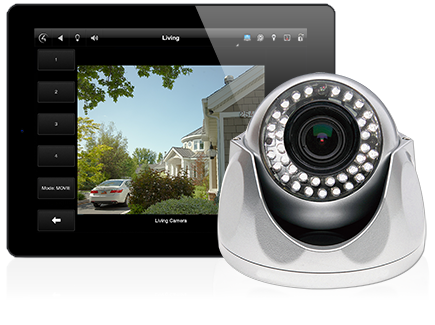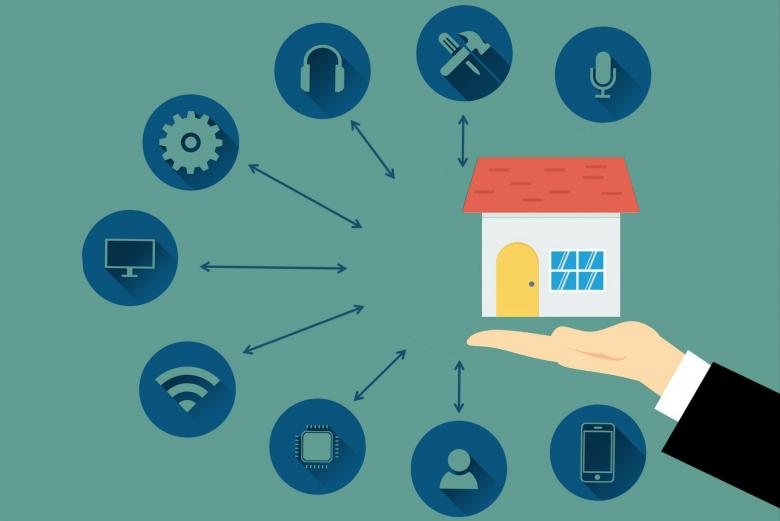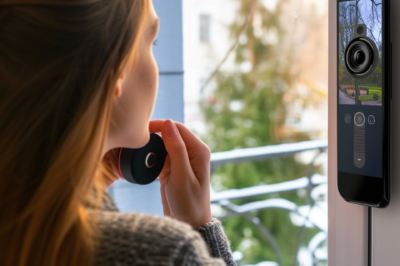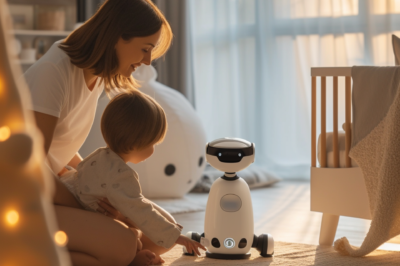
Imagine a home that not only understands your needs but anticipates them, creating an environment that adapts to your preferences without you having to lift a finger. This isn’t a scene from a sci-fi movie; it’s the reality we’re stepping into thanks to AI in smart home technology. The seamless integration of artificial intelligence into our living spaces is not just changing how we interact with our homes—it’s redefining the very fabric of daily living.
As we embrace this new era, let’s explore the exciting advancements AI is bringing to our homes, transforming them from passive structures to dynamic, responsive companions. Whether you’re a tech enthusiast or simply curious about the future of living, the journey into AI-powered home automation is one that promises to enhance every aspect of our lives.
Revolutionizing Living Spaces: The AI-Powered Home Automation Movement
Home automation has come a long way from clunky garage door openers and basic programmable thermostats. Today, we’re witnessing a movement where AI is the driving force, turning our homes into intelligent entities capable of making decisions for our comfort and convenience. The AI-powered home automation movement is not just about controlling devices; it’s about creating ecosystems that learn, adapt, and even think for themselves.
A Glimpse into Tomorrow: AI’s Role in Smart Homes Today
Right now, in homes around the world, AI is working quietly behind the scenes. Smart thermostats are learning our schedules to optimize heating and cooling. Voice assistants are making our shopping lists and controlling our entertainment systems. Even our fridges have the capability to remind us when we’re running low on essentials. This is AI in action today, setting the stage for an even smarter tomorrow.
But the true magic of AI in smart homes isn’t just about convenience; it’s about personalization. AI doesn’t treat all users the same—it gets to know you. It recognizes your voice, learns your habits, and tailors your home environment to suit your unique preferences. That’s the kind of personal touch that turns a house into a home.
From Novelty to Necessity: The Evolution of Smart Home Tech
Remember when having a robot vacuum felt like living in the future? Now, these devices are just the tip of the iceberg. Smart home technology has evolved from a luxury to a staple in many households. What was once a novelty has become a necessity for those who’ve experienced the profound impact AI can have on everyday life. As technology advances, so does our reliance on it, and AI is at the heart of this transformation.
Taking Command: How AI Interacts with Smart Home Devices
Interaction is the cornerstone of AI in smart homes. It’s not just about issuing commands; it’s about dialogue. AI doesn’t just respond to what we say; it understands context, processes natural language, and even picks up on subtleties in our tone. This sophisticated level of interaction is what makes AI feel less like a tool and more like a member of the family.
Whether you’re asking your smart speaker to play your favorite song or getting your coffee maker to start brewing your morning cup as your alarm goes off, AI is the maestro conducting this symphony of devices. It’s a seamless blend of technology and daily life that’s becoming more intuitive by the day.
The Brain Behind the Scenes: Understanding AI Processors
At the heart of every AI-powered device is a processor that’s tirelessly working to make sense of data. These processors are the brains of the operation, taking in information from sensors and user inputs, then making lightning-fast decisions. They’re designed to handle complex algorithms that enable devices to learn from interactions, making them smarter over time.
Consider a smart security camera with an AI processor. It doesn’t just record video; it analyzes footage in real-time, distinguishing between a delivery person and a potential intruder. This kind of processing power is what sets AI apart in the realm of smart home technology.
Communicating with Your Home: AI and Voice Recognition
Voice recognition has become a staple of AI interaction in smart homes. It’s the most natural form of communication for us, and AI has become incredibly adept at understanding it. Gone are the days of memorizing specific commands; now, you can speak to your home as you would to a family member, and it responds accordingly.
This technology isn’t just about recognizing words; it’s about understanding intent. When you say, “It’s too dark in here,” a smart home equipped with AI doesn’t just hear words—it understands you want more light and adjusts the brightness of your smart bulbs without you having to specify.
As we continue to embrace AI in our homes, the way we live is evolving. Our homes are no longer static environments but dynamic spaces that cater to our needs and preferences. The AI-powered home automation movement is not just about technology; it’s about enhancing the quality of life, one intelligent interaction at a time.
Customizing Comfort: Personalization and AI-powered Adaptation
The beauty of AI in smart home technology lies in its ability to make life not just easier, but also more comfortable. It’s all about personalization—your home now has the ability to adapt to your preferences in real-time, creating an environment that’s tailored just for you. This level of customization was once a dream, but now, it’s a reality that’s reshaping our expectations of home living.
Learning Your Lifestyle: Predictive Adjustments for Daily Routines
AI doesn’t just react; it predicts. By learning your daily routines, AI can make adjustments before you even think to make them yourself. It’s like having a personal assistant who knows exactly when you need your morning coffee, when to dim the lights for movie night, or when to start warming up the bedroom as your bedtime approaches.
-
Wake up to a gently heated bathroom floor on chilly mornings.
-
Have your favorite playlist start playing as you get ready for work.
-
Receive traffic updates and best-route suggestions as you grab your keys.
-
Walk into a pre-cooled home after a hot day out.
-
Enjoy a perfect ambient temperature as you drift off to sleep.
This predictive power is a game-changer, ensuring that your home isn’t just smart—it’s thoughtful.
Smart Comfort: AI-Driven Climate and Lighting Control
AI-driven climate and lighting control systems are the cornerstones of a comfortable home. They go beyond mere schedules and timers; these systems learn from your behavior and environmental factors to create the perfect atmosphere. Whether it’s adjusting the blinds to harness natural light or setting the thermostat to your ideal temperature, AI makes sure your home always feels just right.
And it’s not just about what you like; it’s also about what’s best for you. AI can even adjust the lighting to help regulate your circadian rhythm, promoting better sleep and overall well-being. It’s a holistic approach to comfort that only AI can deliver.

Enhancing Security: AI’s Vigilant Eye on Home Safety
When it comes to home safety, AI is like a vigilant guardian. It’s always on, always watching, and always ready to act. This isn’t about creating a fortress; it’s about providing peace of mind. With AI, your home isn’t just secure; it’s proactive in keeping you and your loved ones safe.
Proactive Protection: AI in Surveillance and Alarms
Surveillance and alarms have been around for decades, but AI has taken them to a whole new level. With advanced image and sound recognition, AI-powered systems can differentiate between normal activity and potential threats. This means fewer false alarms and quicker responses to real dangers.
Imagine a system that can tell the difference between a pet moving around the house and an intruder. Or one that can recognize the sound of glass breaking and immediately alert you, while also notifying emergency services if necessary. This is the proactive protection that AI brings to the table.
Peace of Mind: AI’s Response to Emergencies and Unusual Activity
AI’s response to emergencies goes beyond alerting you to a problem; it takes action. In the event of a fire, for example, an AI system can not only sound the alarm but also guide you to the safest exit, shut down the HVAC system to slow the spread of smoke, and even communicate with first responders to provide real-time information about the situation.
But it’s not just about emergencies. AI can also detect and respond to unusual activity, like doors being left open or unusual patterns of movement that could indicate a health issue. It’s a comprehensive approach to safety that keeps your well-being front and center.
In the end, AI in smart home technology is about creating a living space that’s not just connected but truly conscious—a home that knows you, protects you, and cares for you. It’s a new era of comfort and security, and it’s just the beginning.
Energy Efficiency: AI’s Green Thumb in Managing Resources
AI isn’t just about adding convenience to our lives; it’s also about enhancing sustainability. With climate change concerns on the rise, AI’s role in managing home energy consumption is more important than ever. It’s like having a green thumb, but instead of just nurturing plants, it’s nurturing the planet by optimizing the energy we use in our homes.
Smart Savings: AI in Energy Consumption Analysis
One of the smartest ways AI helps us is by analyzing our energy consumption patterns. It looks at when and how we use energy, then finds ways to cut back without compromising our comfort. For instance, it can learn to pre-heat or cool your home during off-peak hours to save on utility bills. But it’s not just about following a schedule; AI can even adjust in real-time based on changing weather conditions or electricity rates.
-
Monitor real-time energy usage to identify wasteful practices.
-
Automatically switch off appliances when they’re not in use.
-
Optimize the use of solar panels by predicting sunny hours.
-
Adjust energy consumption based on utility rate fluctuations.
-
Provide personalized tips for further energy savings.
These smart savings are not just good for your wallet; they’re good for the environment too.
Intelligent Efficiency: Automated Energy Management Systems
Automated energy management systems are the powerhouse of AI-driven energy efficiency. They’re like a central command center that oversees all your home’s energy flows. These systems can control heating, lighting, and appliances to ensure that energy is used as efficiently as possible. And because they’re automated, they do all this without you having to think about it.
Imagine your home automatically adjusting blinds to reduce heat gain from the sun or dialing down the water heater when no one is home. It’s this kind of intelligent efficiency that’s making our homes not just smarter, but also more eco-friendly.
Future Trends: What’s Next for AI in Home Automation
The future of AI in home automation is as exciting as it is boundless. With advancements in technology, the possibilities are expanding every day. We’re not just looking at homes that respond to our needs; we’re heading towards homes that can think ahead for us, homes that seamlessly integrate with various aspects of our lives, from entertainment to health.
Blurred Lines: The Integration of AI with IoT and Robotics
The lines between AI, the Internet of Things (IoT), and robotics are becoming increasingly blurred. In the future, we’ll see even more integration, with AI acting as the brain that connects and controls a network of devices and robots. This means your fridge could communicate with your grocery store, or your robot vacuum could work in tandem with your smart lighting to clean more effectively.
As these technologies converge, our homes will become more responsive and capable than ever before. It’s not just about gadgets talking to each other; it’s about creating an ecosystem that works together for your benefit.
The Next Frontier: AI’s Expanding Role in Home Entertainment and Health
AI is set to revolutionize home entertainment and health in ways we’re just beginning to understand. In the realm of entertainment, AI could curate personalized content, manage immersive virtual reality experiences, or even create music and art based on your mood and preferences.
When it comes to health, AI could monitor vital signs, remind you to take medication, or even alert medical professionals in case of an emergency. It’s about leveraging technology to not only entertain but also care for us in the most personalized way possible.
As we look to the future, one thing is clear: AI is not just a passing trend in home automation. It’s the foundation upon which we’re building a smarter, more efficient, and more personalized way of living. The journey has just begun, and the destination promises a home that’s not only a place to live but a partner in our lives.
Seamless Living: Case Studies and User Experiences
Let’s step away from the theoretical and dive into the real-life impact of AI in smart homes. These case studies and user experiences paint a vivid picture of how AI isn’t just a fancy addition to our homes—it’s a transformative force that’s reshaping how we live, one smart device at a time.

Real-World Success: Stories of AI Transforming Daily Life
Take Sarah, a working mother of two, who installed smart locks and cameras in her home. With AI, she can check on her kids from work, ensure they’re safe, and even unlock the door for them if they forget their keys—all from her smartphone. Then there’s James, whose AI-powered thermostat learned his schedule and preferences, resulting in a 20% reduction in his energy bill. These stories are becoming increasingly common as more people welcome AI into their homes.
Consider the elderly couple who now live more independently thanks to AI health monitoring and fall detection systems. Or the family who went on vacation and received an alert from their AI home system about a water leak, which they were able to address immediately, avoiding potential disaster.
These narratives are just the beginning. As AI technology advances, we’ll see even more compelling stories of how it’s making life better and safer for people around the globe.
The Human Touch: How AI Learns from User Feedback
AI may seem like a one-way street, but it’s actually a dynamic interaction. It’s not just about AI serving us; it’s also about us teaching AI. Every time we interact with our smart devices, we’re providing valuable feedback that helps AI learn and improve. It’s a partnership where our input directly shapes the AI’s behavior and capabilities.
For example, when you correct your voice assistant after a misunderstanding, it learns from that correction. Over time, these adjustments lead to a more accurate and personalized experience. It’s this human touch that ensures AI doesn’t just serve our needs but evolves with them.
Key Takeaways: A Snapshot of AI’s Impact on Home Automation
As we wrap up our exploration of AI in smart home technology, let’s crystallize the key points:
-
AI is revolutionizing home living by creating adaptive, responsive, and personalized environments.
-
From energy savings to enhanced security, AI’s capabilities are making a tangible difference in people’s lives.
-
User feedback is a critical component of AI’s evolution, ensuring that smart home technology continues to grow smarter and more intuitive.
-
Real-world success stories highlight the profound and positive impact of AI on daily life.
-
The future of AI in home automation is bright, with endless possibilities for further integration and innovation.
These takeaways underscore the transformative power of AI in our homes and the exciting potential it holds for the future.
Frequently Asked Questions (FAQ)
How does AI improve home security compared to traditional systems?
AI takes home security to new heights by adding layers of intelligence that traditional systems simply can’t match. Here’s how:
-
Advanced Recognition: AI can distinguish between regular household activity and potential security threats, reducing false alarms and focusing on real issues.
-
Proactive Monitoring: AI doesn’t just record events; it actively monitors and analyzes them, often predicting and preventing incidents before they occur.
-
Real-Time Alerts: With AI, you get immediate notifications on your devices, allowing for quicker response times to any security breaches.
-
Integration and Automation: AI systems can integrate with other smart home devices to automatically lock doors, turn on lights, or even alert authorities in case of an emergency.
-
Learning from Behavior: Over time, AI learns from your habits and patterns, continually improving its ability to protect your home effectively.
In essence, AI doesn’t just secure your home; it smartly secures it, making it an active participant in your safety.
Can AI-powered home automation save me money on my utility bills?
Absolutely, AI-powered home automation is like a financial advisor for your energy usage. It’s not just about turning off lights when you’re not in the room—although that’s part of it. AI looks at the big picture, analyzing your consumption patterns and making adjustments that can lead to significant savings over time. Here’s how it works:
-
Optimized Scheduling: AI can control when appliances run, taking advantage of off-peak rates and avoiding energy spikes.
-
Efficient Climate Control: Smart thermostats learn your preferences and adjust settings to keep your home comfortable with minimal energy use.
-
Intelligent Lighting: AI dims or turns off lights based on natural light levels and room occupancy, reducing unnecessary electricity use.
-
Device Management: AI ensures devices are in energy-saving modes when not in use, cutting down on ‘vampire’ energy waste.
-
Preventative Maintenance: By monitoring appliance performance, AI can alert you to issues before they become costly problems.
By integrating AI into your home automation, you’re not just making life easier; you’re also making it more affordable.
What kind of privacy considerations should I be aware of with AI in my home?
Privacy is a hot topic when it comes to AI in the home. After all, a device that can listen and learn can also collect data you might prefer to keep private. Here are some things to keep in mind:
-
Data Encryption: Ensure your devices use encrypted communications to protect your data from prying eyes.
-
User Permissions: Be mindful of who has access to your smart home apps and devices. Set strong passwords and manage permissions carefully.
-
Manufacturer Policies: Read the privacy policies of your device manufacturers to understand how they handle your data.
-
Network Security: Secure your home Wi-Fi network, as it’s the gateway to your smart home devices.
-
Regular Updates: Keep your devices updated with the latest firmware to protect against security vulnerabilities.
Being informed and proactive about privacy can help you enjoy the benefits of AI without compromising your personal information.
Is AI home automation difficult to set up for someone who is not tech-savvy?
It’s a common concern, but setting up AI home automation has become more user-friendly than ever. Manufacturers know that ease of use is key to adoption, so they’ve made setup as simple as possible. Many devices come with step-by-step guides, and there are countless resources online to help you through the process. Plus, once your system is up and running, managing it is often as easy as speaking a command or tapping an app.
And remember, you don’t have to dive in all at once. You can start with a single smart device and expand your system as you become more comfortable. The key is to take it at your own pace.
How do AI home devices interact with each other, and is a central hub necessary?
AI home devices communicate with each other through a network, often using Wi-Fi or a technology like Zigbee or Z-Wave. This allows them to work together, creating a more cohesive and intelligent system. For example, your smart smoke detector can tell your smart lights to turn on in an emergency, making it easier to see your way out.
While a central hub can make managing these devices more convenient, it’s not always necessary. Many devices can be controlled directly from your smartphone or through a voice assistant. The choice of using a hub often comes down to personal preference and the complexity of your smart home setup.
In conclusion, AI in smart home technology is not just a trend—it’s a lifestyle shift. It’s about embracing a future where our homes are not just shelters but partners in our daily lives. From saving money to enhancing security, from simplifying tasks to creating personalized experiences, AI is redefining what it means to be at home.
As we look forward to more advancements, it’s clear that the smart home revolution is just getting started. And with AI at the helm, the possibilities are as boundless as our imaginations. So, whether you’re a tech whiz or just getting started, there’s never been a better time to explore the benefits of AI-powered home automation. Embrace the movement and make your home a smarter, safer, and more sustainable place to live.



